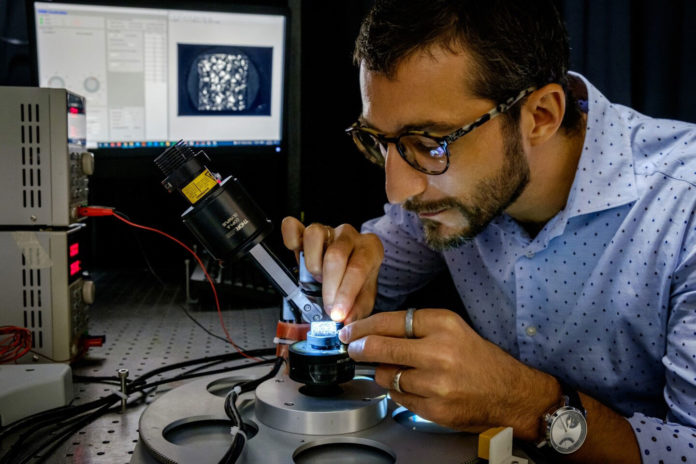3D printing technologies have been considered nowadays for various applications in aerospace, automotive, biomedical, digital art, architectural design, etc. The 3D-printed metal parts for use in any critical systems, such as aircraft, should not be defective.
Now, researchers from Nanyang Technological University, Singapore (NTU Singapore) have developed a fast and low-cost imaging method that can analyze the structure of 3D-printed metal parts and offer insights into the quality of the material.
Most 3D-printed metal alloys consist of a myriad of microscopic crystals – it’s similar to the woodgrain of wooden items. To access the strength and toughness of such printed alloys, engineers used scanning electron microscopes to ascertain different shapes, sizes, and atomic lattice orientation. The process is laborious and time-consuming, and the microscopes are priced from $70,000 to more than a million-dollar.
The new system developed by NTU researchers is less expensive, less labor-intensive, and provides the same quality of information in a matter of minutes. The system consists of an optical camera, a flashlight, and a notebook computer that runs a proprietary machine-learning software developed by the team – with the hardware costing about $18,400.
The new imaging method first requires treating the metal surface of the printed item with chemicals to reveal the microstructure, then placing the sample facing the camera, and taking multiple optical images as the flashlight illuminates the metal from different directions.
The software then determines the shape, size, and orientation of microscopic crystals by analyzing the patterns produced by light that is reflected off the surface of different metal crystals. The entire process takes about 15 minutes to complete and costs an only fraction of the price compared to the current methods.
“Using our inexpensive and fast-imaging method, we can easily tell good 3D-printed metal parts from the faulty ones. Currently, it is impossible to tell the difference unless we assess the material’s microstructure in detail,” explains Asst. Prof. Matteo Seita, researchers at Singapore’s Nanyang Technological University.
Researchers say this new made-in-NTU technology could benefit, for example, the aerospace sector, where a low-cost, rapid assessment of mission-critical parts could be a gamechanger for the maintenance, repair, and overhaul industry.
